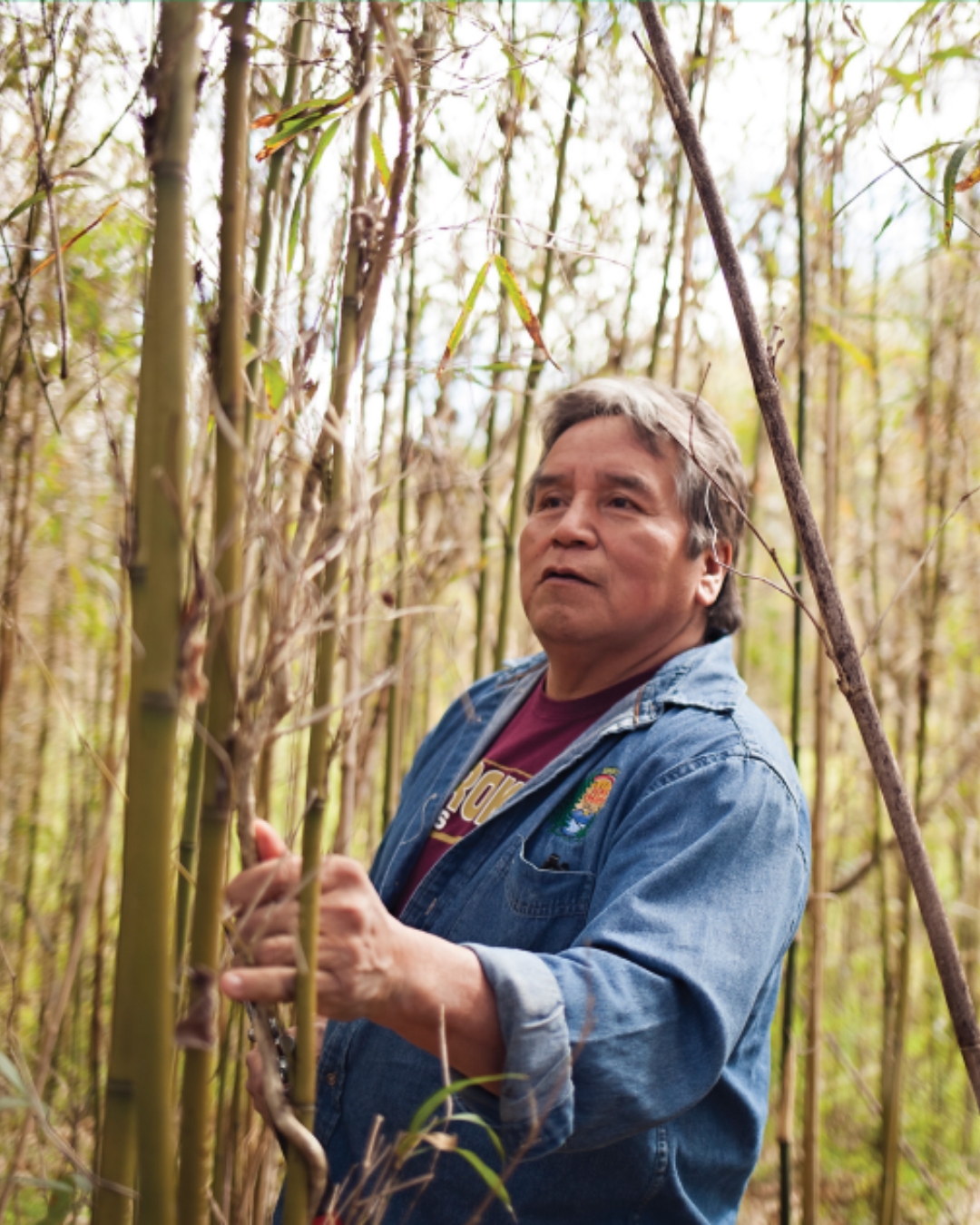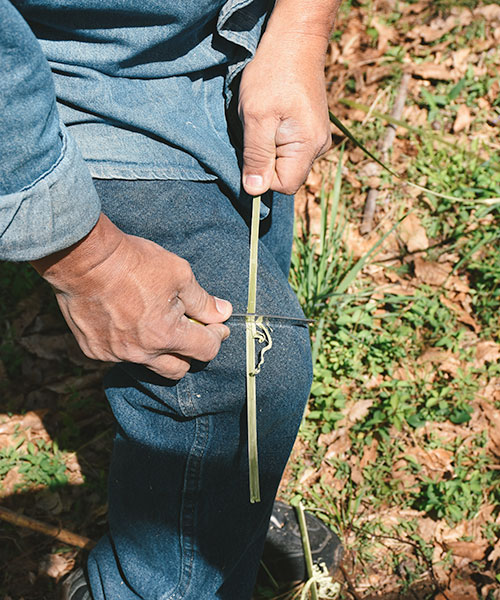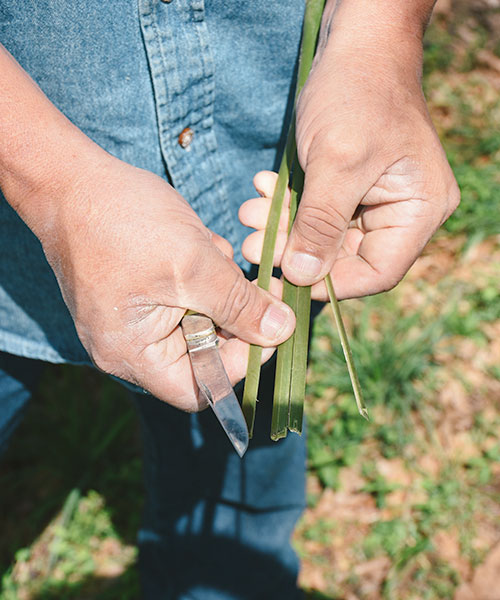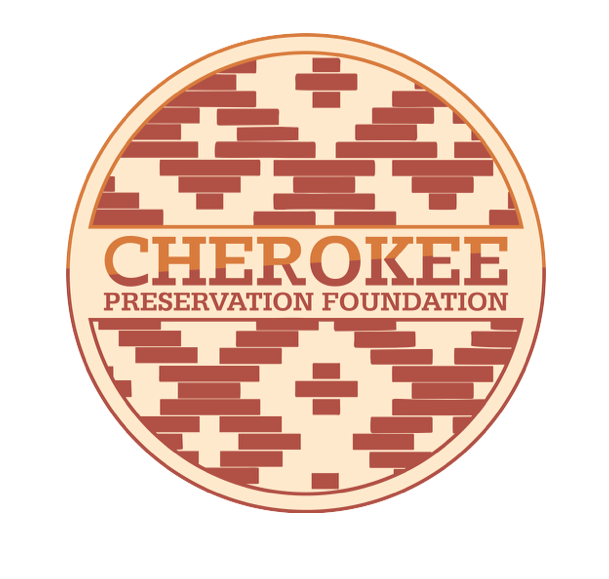SUMTER National Forest

(I – HI – YA, ᎢᎯᏯ) (Arundinaria Gigantea)
Extensive canebrake ecosystems, which could be found in alluvial floodplains and bottom lands throughout the Southeast in the pre-modern era, provide important ecological and cultural services. They stabilize stream banks, protect water quality and contribute significantly to plant and animal diversity by furnishing essential habitat and corridors for a variety of species. Native Americans also utilize canebrakes as a fundamental resource for making baskets, blowguns, mats and other utilitarian and ceremonial items and through processing the plant’s rhizome into a traditional starch.
Early colonial settlers and explorers encountered massive canebrakes throughout the Southeast and, upon discovering that this expansive and ubiquitous plant was a nutritious source of food for livestock and that canebrakes provided rich and fertile farmland, quickly decimated these native ecosystems. Today, it is estimated that canebrakes occupy less than 2% of their original habitat.




awarded by Cherokee Preservation Foundation (CPF)
&
Revitalization of Traditional Cherokee Artisan Resources (RTCAR)

November 2025: The Chattooga Conservancy was recently awarded a grant from the Cherokee Preservation Foundation (CPF) and Revitalization of Traditional Cherokee Artisan Resources (RTCAR)! This grant represents a renewal of support for our organization’s continued efforts to restore native canebrake ecosystems in the Chattooga River watershed.
We have partnered with the CPF and RTCAR since 2011, working to restore canebrake ecosystems in the Chattooga River watershed while supporting the Cherokee artisans who depend on them. Now more than ever, grants like this are vital to our work to restore Native River Cane.
Grant funds will advance our Native Cane Restoration Project on the Andrew Pickens Ranger District, and help with invasive species removal and habitat restoration efforts for River Cane in the vicinity of the Highway 28 Bridge over the Chattooga River. With this much-needed support, we’ll be buying new tools–including the purchase of a brand new Weed Wrench–and organizing volunteer days to open up restoration areas for new cane growth. Keep your eyes peeled for volunteer opportunities!

